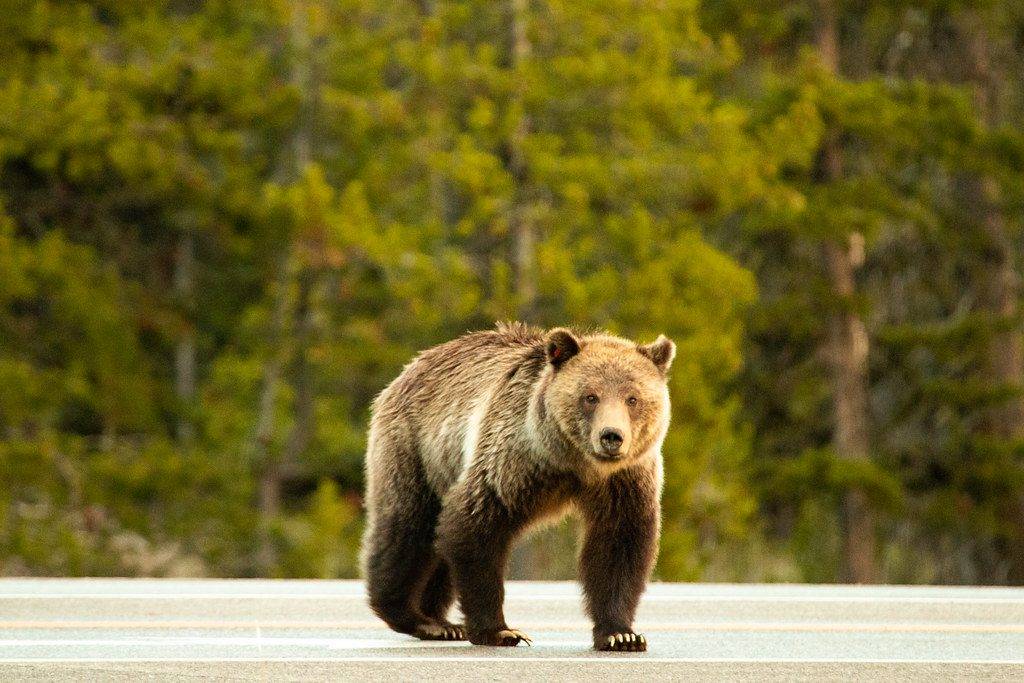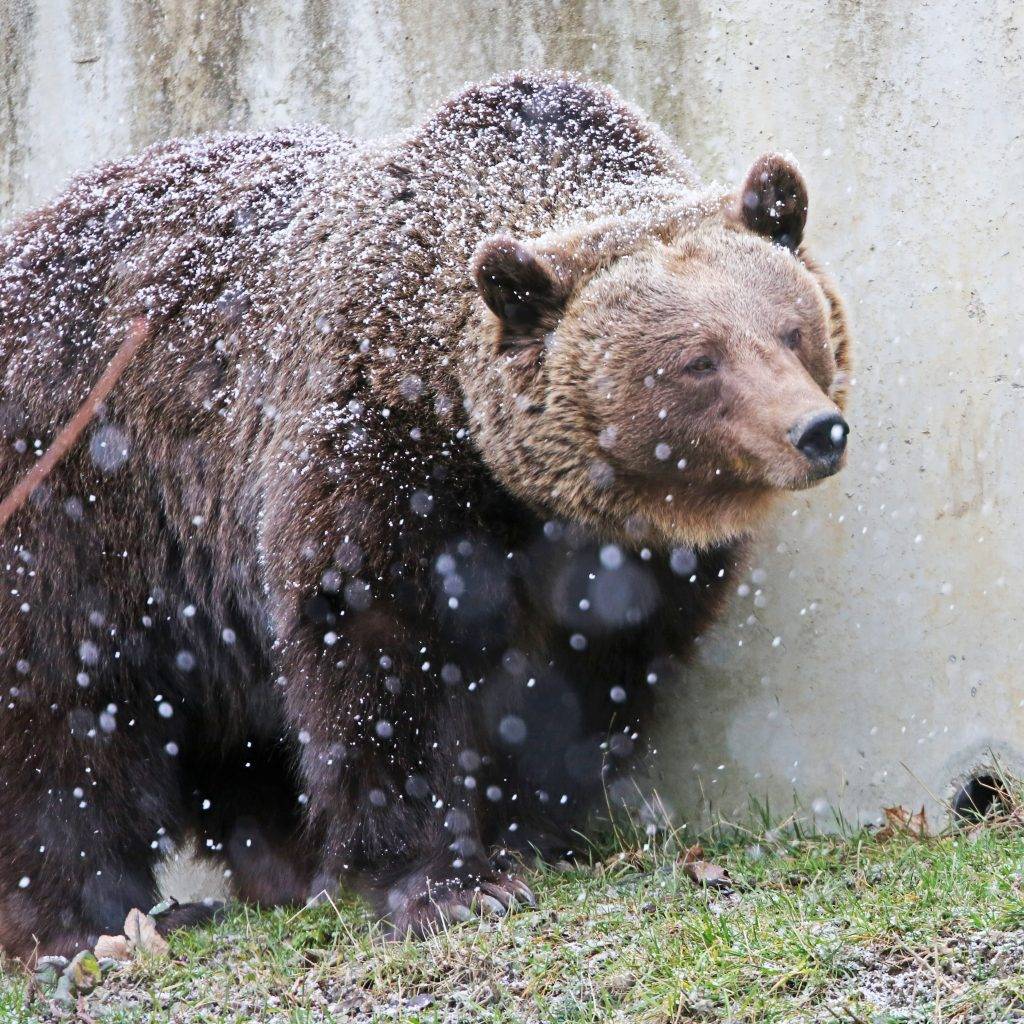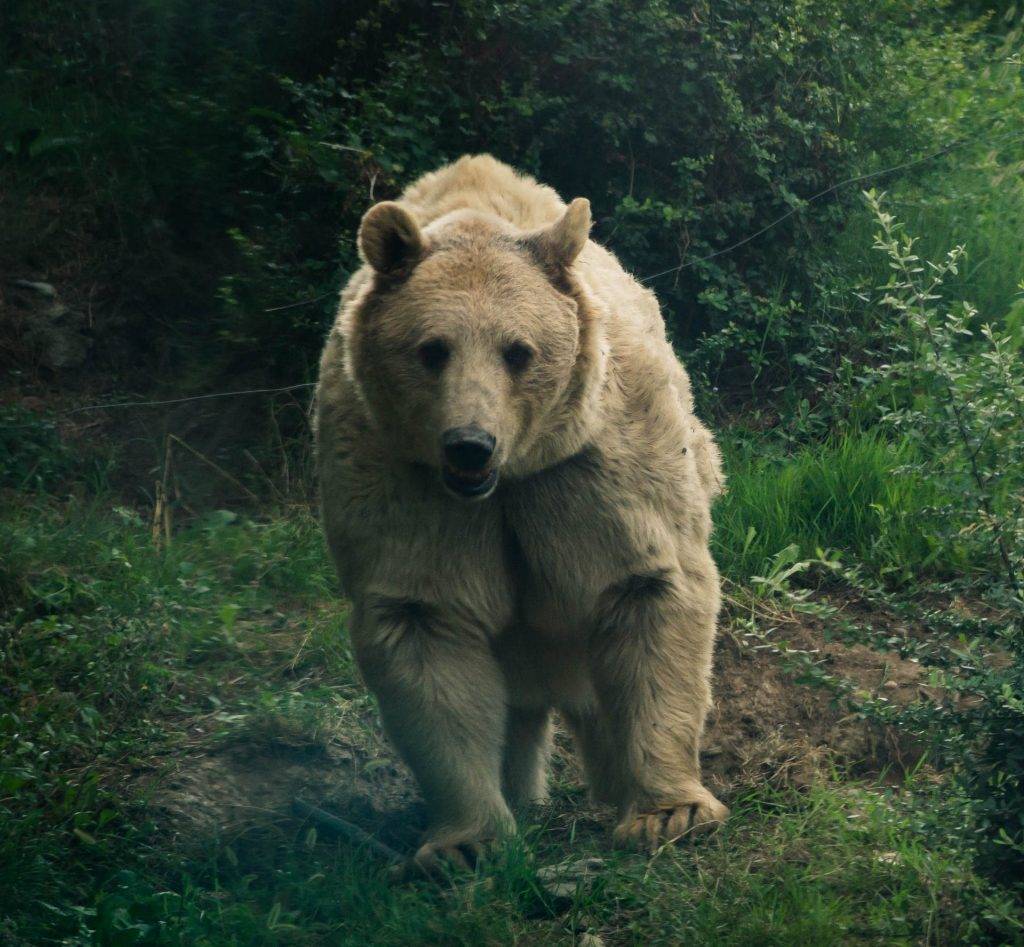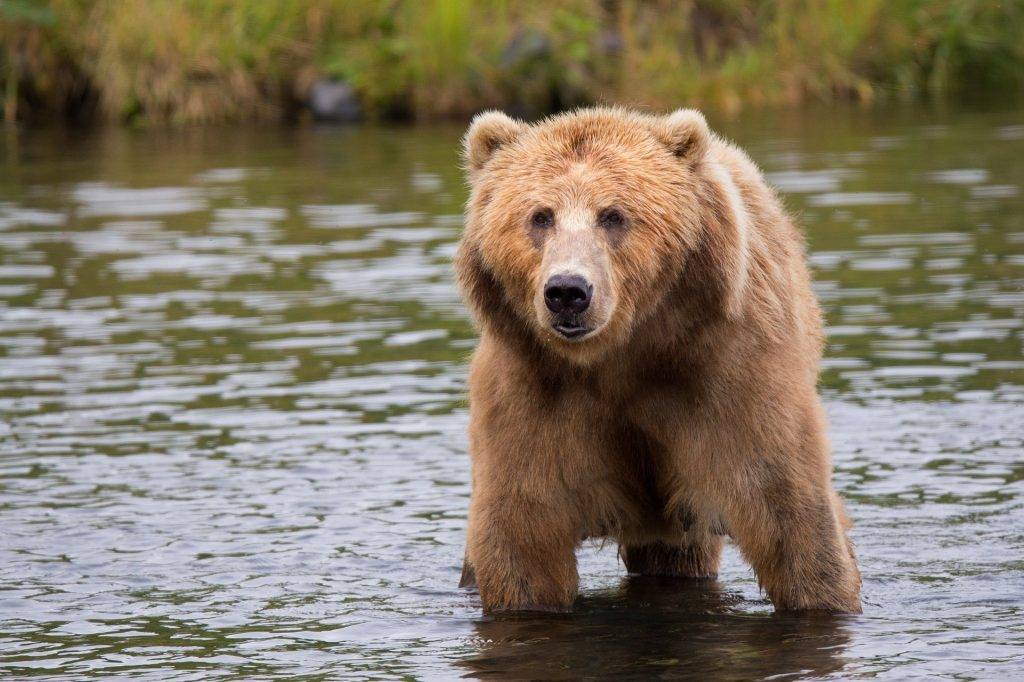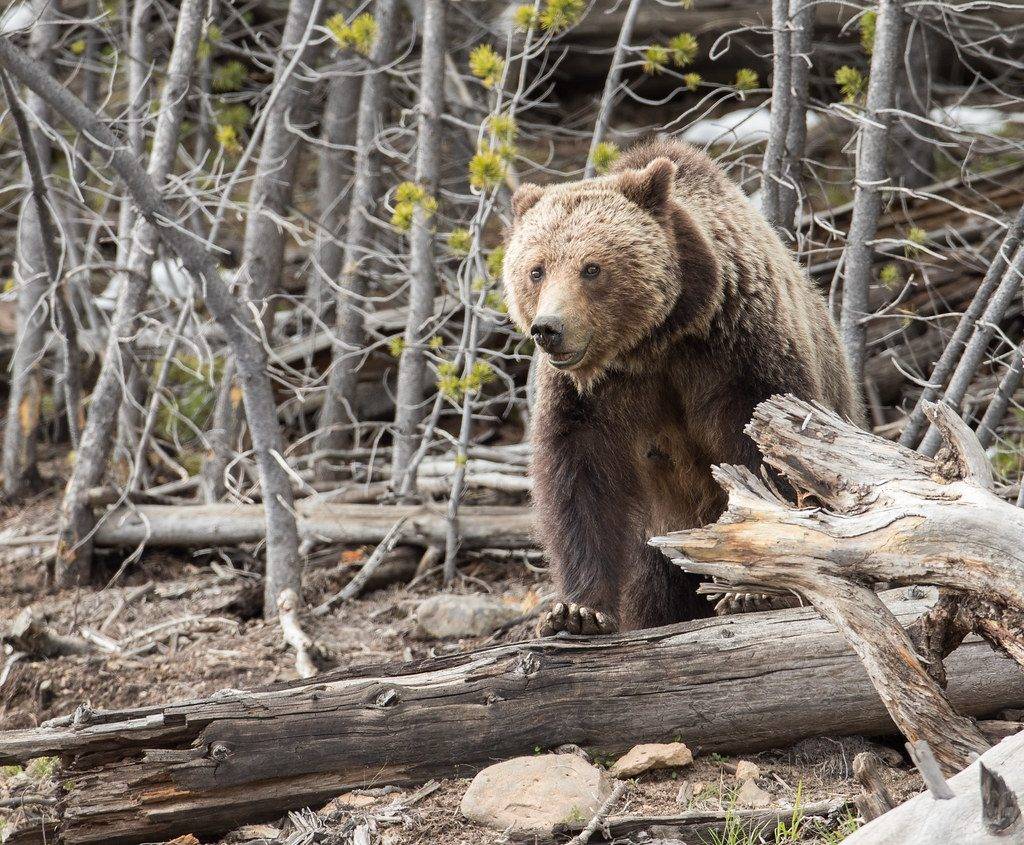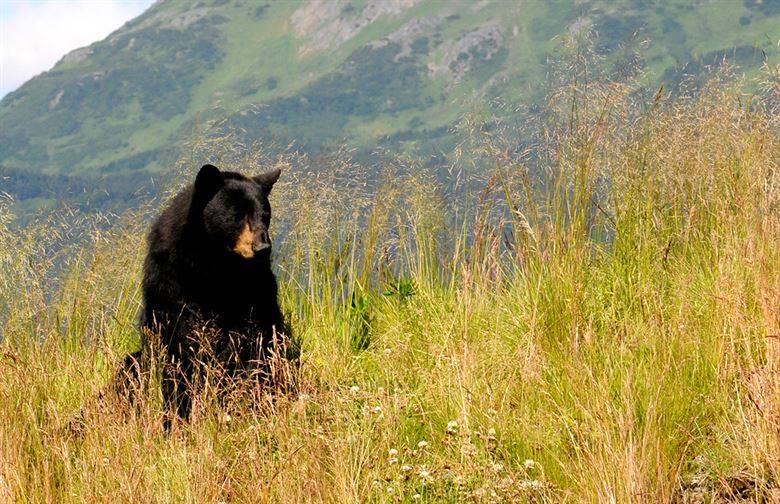Bears are common among wildlife species in Glacier National Park, specifically, Black bears and Grizzly bears.
Many visitors have mixed feelings about bears, they are fascinating and exciting animals that most people want to see while vacationing in Glacier – on the other hand – there is some apprehension around a violent bear encounter while hiking in the park.
Although one must always take precautions in bear country, statistics demonstrate violent encounters with bears are extremely rare.
Between 1910 and 1966, there were no recorded human fatalities. In 1967, with annual attendance nearing one million visitors, there were two fatal attacks. Between 1968 and 1998, with annual attendance reaching two million visitors a year, there were an additional eight fatalities.
There has not been a bear related fatality since 1998, and today, the park averages three million visits a year.
Although a total of 10 fatal bear attacks is 10 too many, it is considered an extremely rare occurrence given more than one hundred million human visits in bear country.
Moreover, a percentage of the 10 fatalities occurred during solo hikes – activity that is strongly discouraged. Ranger-led hikes, and even smaller personal groups of three or four can typically generate enough noise while hiking to discourage bears from coming too close (most wildlife equally wants to avoid human contact).
History indicates although you’re likely to see bears in Glacier Park, the odds a person will experience a violent bear encounter causing death has been proven remote (10 fatalities in 111,300,380 visits between 1910 and 2018).
Nevertheless, even remote odds need to be taken seriously, therefore having a proper understanding of wild animals in their domain is prudent – additional safety precautions are available on the National Park Service website:
https://www.nps.gov/glac/planyourvisit/bears.htm
Smoky Bear Ranch offers a free loaner program that includes high-quality bear spray.
Now, let’s take a closer look at these fascinating animals and discover why most people look forward to seeing and photographing them.
The Grizzly Bear
There are an estimated 55,000 Grizzly bears in North America, most of which live in Alaska. Of that number, roughly 800 can be found in Montana.
Grizzly bears range in color from blond to nearly black, adult females on average weigh between 290 and 400 pounds, whereas adult males on average weigh between 400 and 790 pounds, with reported exceptions as large as 1,500 pounds, and nearly 10 feet tall on their hind legs.
Grizzlies typically stand 3 to 4 feet high on all fours, but again, exceptions have been noted as tall as 5 feet on all fours.
Naturally, you may see smaller sized Grizzlies and larger sized Black bears therefore understanding some defining differences for the Grizzly will help you identify them correctly:
- Large muscular hump on the shoulders
- Concave facial profile (versus flat)
- Small rounded ears (versus taller and pointed)
- Lower rump (below shoulders, versus above)
- Longer claws (up to 4 inches)
Grizzly bears eat both plants and animals including large mammals such as moose, elk, caribou, deer, bighorn sheep, and bison. They will also eat fish, quite often spawning salmon, and birds and their eggs, but it is not uncommon for their diet to consist mostly of plant life, primarily berries.
The Black Bear
There are considerably more Black bears in North America than Grizzly bears.
Although the Black bear’s name is a species name and not a definition of color, it is estimated that 70% of Black bears are black, except in the Rocky Mountains, where only 50% of them are likely to be black. Other colors range from blond to brown.
Typically smaller than Grizzly bears, adult female Black bears on average weigh between 90 and 390 pounds, while adult males weigh on average between 126 pounds and 551 pounds.
The largest recorded Black bear weighed in at an estimated 1,100 pounds, and nearly 8 feet long.
Black bears typically stand 2 ½ to 3 feet on all fours and have good dexterity, are strong, fast (up to 30 mph), excellent tree climbers, and possess a keen sense of smell – seven times stronger than domestic dog.
Similar to Grizzly bears, Black bears will eat other animals, especially fish, although 85% of their diet typically consists of vegetation. Plants, grasses, shrubs, tree buds, fruits and berries are all common meals.
Black bears by nature are not as aggressive as Grizzly bears, but just like Grizzlies, will fiercely protect their young.
Glacier Park Bear Sightings
With a good understanding and respect for bears, it’s more likely than not, most visitors will want to observe the natural behavior of Grizzly and Black bears while vacationing in Montana.
In seasonal climates like Montana, both Grizzly and Black bears will bunker down during the cold, winter months – this period typically lasts 4 to 6 months starting in November/December.
Although bears can appear nearly anywhere in and around Glacier National Park, some of the more common locations where you’re likely to see bears include:
- Many Glacier Valley (Iceberg Lake Trail, Cracker Lake Trail, Grinnell Glacier Trail)
- Lake McDonald and Logan Pass Area (Highline Trail, Trout Lake Trail, Hidden Lake Trail, Huckleberry Mountain Trail)
- North Fork Area (Quartz Lakes Loop, Numa Ridge Lookout Trail, Logging Lake Trail)
- Two Medicine Valley (Scenic Point Trail, North Shore & South Shore Trails, Upper Two Medicine Lake Trail)
- Saint Mary Valley (Gunsight Pass Trail, Peigan Pass Trail, Siyeh Pass Trail)
Bears In Captivity
If you’re visit to Glacier is primarily a wildlife excursion and you’re not fortunate enough to see bears in their natural habitat, there are various facilities in Montana that are home to Grizzly bears that may not otherwise survive in the wild:
If you’re interested in the circumstances surrounding fatal bear attacks in North America, please refer to the below article, keeping in mind, chances are mathematically greater (based on history) that a person will be struck by lightening:
https://en.wikipedia.org/wiki/List_of_fatal_bear_attacks_in_North_America


